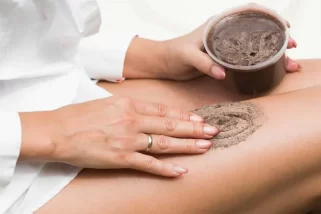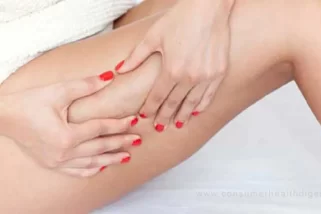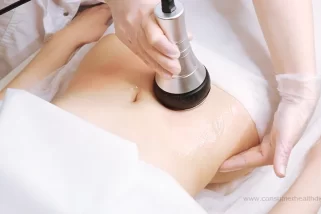Introduction
Cellulite is a lumpy, dimpled appearance on the skin that affects up to 90% of women at some point in their lives. Even though cellulite is a benign condition, people often feel less confident and self-conscious about it because of society’s beauty standards, which emphasize smooth, toned skin. [1]

The idea that cellulite is an unsightly feature has given rise to a multibillion-dollar business offering a variety of treatments that promise to lessen or eliminate the condition’s appearance. Advertising and marketing campaigns have the power to incite irrational expectations, leading many individuals to seek out cellulite removal procedures before fully understanding the risks and limitations.
From non-invasive topical creams to minimally invasive procedures and surgical surgeries, there are numerous cellulite removal treatments available, each with pros and cons. It might be intimidating to traverse this territory but to make informed decisions about the best course of action for particular needs and goals, it’s critical to separate fact from fiction.
Understanding Cellulite
Fibrous bands known as septae press down on the skin, causing an uneven surface that leads to cellulite. The dimpled appearance is also a result of fat cells protruding through these bands. This disorder, which mostly affects the thighs, buttocks, and abdomen, is sometimes compared to the appearance of cottage cheese or an orange peel.
Genetics, hormone changes (especially during adolescence, pregnancy, and menopause), weight fluctuations, and a sedentary lifestyle can all raise the risk of developing cellulite. Although those who are overweight are more likely to have cellulite, a healthy body weight can also cause cellulite because of the intricate interactions between these factors.
Cellulite can range from mild to severe, with different grades and types affecting various areas of the body. Adipose cellulite, characterized by a more generalized waviness or lumpiness, is often seen on the thighs and buttocks, while fibrous cellulite, with deeper, more pronounced dimples, is more common on the hips and stomach.
Types of Cellulite Removal Procedures
Cellulite is a common and sometimes annoying skin disorder that causes lumps or dimples in the skin’s appearance. To get a more uniform skin texture, people seek out different procedures to smooth out these irregularities.
Cellulite removal techniques can be broadly classified into three categories: minimally invasive procedures, like laser treatments or minor surgical interventions involving small incisions; non-invasive treatments, like applying creams or getting certain types of massages; and more intense surgical options, like fat grafting or skin excision.
Every approach has a unique combination of possible advantages and disadvantages, and the degree of success varies widely based on some variables, such as the skin type of the user and the technique employed.
1. Non-Invasive Cellulite Removal Procedures
Topical therapies with active components like retinol, caffeine, or other substances promise to temporarily improve the look of cellulite by boosting collagen synthesis and blood flow. These treatments include creams, lotions, and gels. However, the results are frequently transient, necessitating continuous, long-term use to sustain any discernible improvement.
Both manual and mechanical massage therapies (such as Endermologie) work to improve circulation and increase lymphatic drainage to reduce cellulite. Although these treatments help smooth skin temporarily, there is disagreement over how effective they are in the long run at minimizing the appearance of cellulite, and many sessions are usually needed.
By employing sound waves to break up the fibrous bands that cause cellulite, a smoother appearance may result from a treatment known as acoustic wave therapy (AWT). Multiple sessions are often required for obvious benefits, and the effects of this non-invasive treatment may vary in their ability to promote collagen production and enhance skin elasticity.
Heat radiation is used in radiofrequency treatments like VelaShape and ThermiSmooth to tighten skin and make cellulite less noticeable. By stimulating the formation of collagen and encouraging lymphatic drainage, these treatments temporarily improve the appearance of cellulite by heating the deeper layers of the skin. [2]
A small laser fiber is inserted into the skin as part of laser therapy, such as Cellulaze, to loosen fibrous bands and promote the formation of collagen. In comparison to non-invasive methods, this minimally invasive process can yield longer-lasting results, but there is a greater chance of adverse effects, including bruising, swelling, and possible skin discoloration.
2. Minimally Invasive Cellulite Removal Procedures
While liposuction is a helpful fat-reducing surgery, because it doesn’t address the underlying fibrous bands that give the skin a dimpled appearance, in certain cases it might accentuate the appearance of cellulite. Sometimes liposuction can make cellulite more evident if it is performed incorrectly or if the skin is not elastic enough. [3]
Subcision is releasing the fibrous bands with a specialized needle or blade, which may enhance the look of the skin. To get more thorough outcomes, this surgery is frequently combined with additional treatments like radiofrequency or laser therapy. However if done by a less skilled practitioner, there is a chance of abnormalities or deformities in the shape, as well as bruising and swelling.
The efficacy of injection-based therapies, such as lipolytic injections and mesotherapy, in decreasing the appearance of cellulite is hotly contested. These treatments seek to increase circulation and break down fat cells. To treat the damaged areas, a mixture of chemicals, including vitamins, enzymes, and plant extracts, are injected directly into the area. Although some people have success, the safety and long-term implications of these injections are still being studied.
3. Surgical Cellulite Removal Procedures
The minimally invasive laser technique known as “cellulaze” targets the fibrous bands and fat that provide the appearance of cellulite. A tiny laser fiber is placed beneath the skin during the procedure to dissolve some of the fat cells and release the fibrous bands. This surgery includes some risks, including possible skin discoloration, bruising, and swelling, but it can significantly improve the look of cellulite. It also requires minor incisions.
Long-lasting results are achieved with Cellfina, a subcision-based treatment that releases the fibrous bands using specialized equipment. Through the use of vacuum-assisted equipment to locate and release the bands, this minimally invasive technique can improve the appearance of the skin for up to three years or longer. But much like other surgical treatments, there are dangers associated with Cellfina, such as swelling, bruising, and the possibility of abnormalities or deformities in contour if the surgery is not done correctly. [4]
Other surgical options, such as fat grafting or skin excision, may be recommended in some cases of severe or resistant cellulite, but they carry higher risks and longer recovery times. Fat grafting involves transferring fat from one area of the body to another to improve contours and smooth out dimples, while skin excision involves removing excess skin and fat to improve the appearance of cellulite-prone areas.
Efficacy and Safety Considerations
Even though many treatments claim to improve the appearance of cellulite, the efficacy and longevity of the results vary depending on the technique employed as well as individual factors including skin elasticity, general health, and the severity of cellulite. Given that cellulite is a complicated issue caused by numerous factors, it’s critical to set realistic expectations and understand that there is no cure for the condition.
Various cellulite removal methods entail different dangers and adverse effects, ranging from mild bruising and swelling to more serious outcomes including infection, skin discoloration, or changes in shape. Despite the potential for more significant results, surgical techniques frequently carry a higher risk and need longer recovery periods. Non-invasive procedures often carry fewer risks, but they could also produce less noticeable or durable effects.
When thinking about cellulite removal procedures, it’s important to have reasonable expectations. Even though some operations might result in noticeable benefits, each person’s experience with the procedure will be different, and the effects might not last long or might eventually need maintenance treatments. It’s crucial to assess the possible advantages against the associated risks and expenses and talk about reasonable expectations with a certified provider.
Cost Considerations and Accessibility
- Procedures to remove cellulite can range greatly in price, from inexpensive over-the-counter creams and lotions to costly surgical procedures. The cost is mostly determined by location and provider expertise, with highly skilled practitioners’ treatments in urban locations typically resulting in higher prices.
- Since most cellulite removal operations are deemed cosmetic and are usually not covered by insurance plans, most people must pay for them out of pocket. However, if cellulite is seriously causing physical or mental distress, certain insurance companies might pay for surgeries.
- The availability of qualified providers and geographic location can restrict access to various cellulite removal techniques. While non-invasive treatments might be easier to get, surgical procedures might need to find specialized facilities or practitioners with a great deal of knowledge in cellulite removal methods.
Lifestyle Factors and Maintenance
Although there are short-term and long-term benefits to cellulite removal treatments, lifestyle choices are critical in reducing cellulite appearance and sustaining outcomes. Regular exercise and a nutritious, high-fiber diet can help manage weight and improve muscle tone, both of which can lead to the appearance of smoother, more toned skin.
Maintaining skin health and suppleness, which can affect the appearance of cellulite, requires adequate hydration. Hydrating foods like fruits and vegetables and drinking lots of water might assist in enhancing the texture of the skin and possibly lessen its look.
Conclusion
Removing cellulite is a widespread but challenging issue for which there is no one-size-fits-all treatment. Individual considerations, intended outcomes, and full comprehension of the advantages and disadvantages should all play a role in the treatment decision.
People can emphasize their entire well-being and self-acceptance and make informed judgments about cellulite removal techniques by arming themselves with reasonable expectations and knowledge.
4 Sources
We review published medical research in respected scientific journals to arrive at our conclusions about a product or health topic. This ensures the highest standard of scientific accuracy.
[1] Gabriel A, Chan V, Caldarella M, Wayne T, O'Rorke E. Cellulite: Current Understanding and Treatment. Aesthet Surg J Open Forum. 2023 Jun 21;5:ojad050. doi: 10.1093/asjof/ojad050. PMID: 37424836; PMCID: PMC10324940.[2] Sadick N. Treatment for cellulite. Int J Womens Dermatol. 2018 Oct 22;5(1):68-72. doi: 10.1016/j.ijwd.2018.09.002. PMID: 30809581; PMCID: PMC6374708.
[3] "Liposuction - Mayo Clinic." 11 Apr. 2023, www.mayoclinic.org/tests-procedures/liposuction/about/pac-20384586.
[4] Friedmann DP, Vick GL, Mishra V. Cellulite: a review with a focus on subcision. Clin Cosmet Investig Dermatol. 2017 Jan 7;10:17-23. doi: 10.2147/CCID.S95830. PMID: 28123311; PMCID: PMC5234561.








 This article changed my life!
This article changed my life! This article was informative.
This article was informative. I have a medical question.
I have a medical question.
 This article contains incorrect information.
This article contains incorrect information. This article doesn’t have the information I’m looking for.
This article doesn’t have the information I’m looking for.